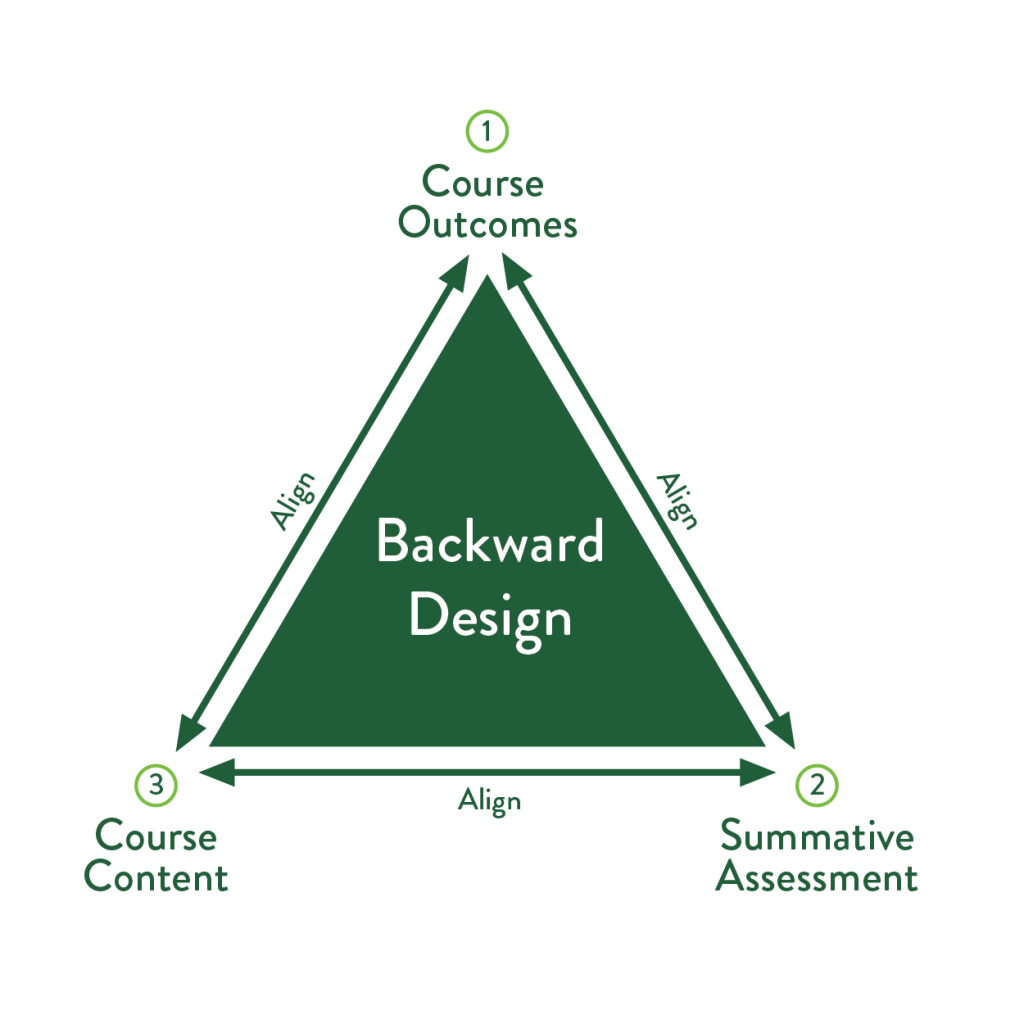1 What Is Backward Design and Why Use It?
What Is It?
Backward Design is an instructional design approach that begins by first defining the desired outcomes and objectives and then creating the assessments, instructional activities, and materials to help learners achieve those outcomes. This approach to curriculum and lesson planning prioritizes learning objectives, resulting in more effective and purposeful teaching and more student-centered and engaging learning experiences.

Jerod Quinn created an excellent video introducing the basics of Backward Design:
Why Use It?
According to Ryan Bowen (2017)[1], there are several advantages to using Backward Design:
- Intentionality: Backward Design “innately encourages intentionality during the design process. It continually encourages the instructor to establish the purpose of doing something before implementing it into the curriculum.”
- Transparent and Explicit Instruction: “If the teacher has explicitly defined the learning goals of the course, then they have a better idea of what they want the students to get out of learning activities.”
- Less Fluff: Backward Design “eliminates the possibility of doing certain activities and tasks for the sake of doing them. Every task and piece of instruction has a purpose that fits in with the overarching goals and goals of the course.”
- Improved Assessment: “Once the learning goals…have been identified, instructors will have an easier time developing assessments…around grounded learning outcomes. Student learning and understanding can be gauged more accurately through a backward design approach since it leverages what students will need to know and understand during the design process in order to progress.”
- Bowen, R. S. (2017). Understanding by Design. Vanderbilt University Center for Teaching. Retrieved October 6, 2023 from https://cft.vanderbilt.edu/understanding-by-design/. ↵
